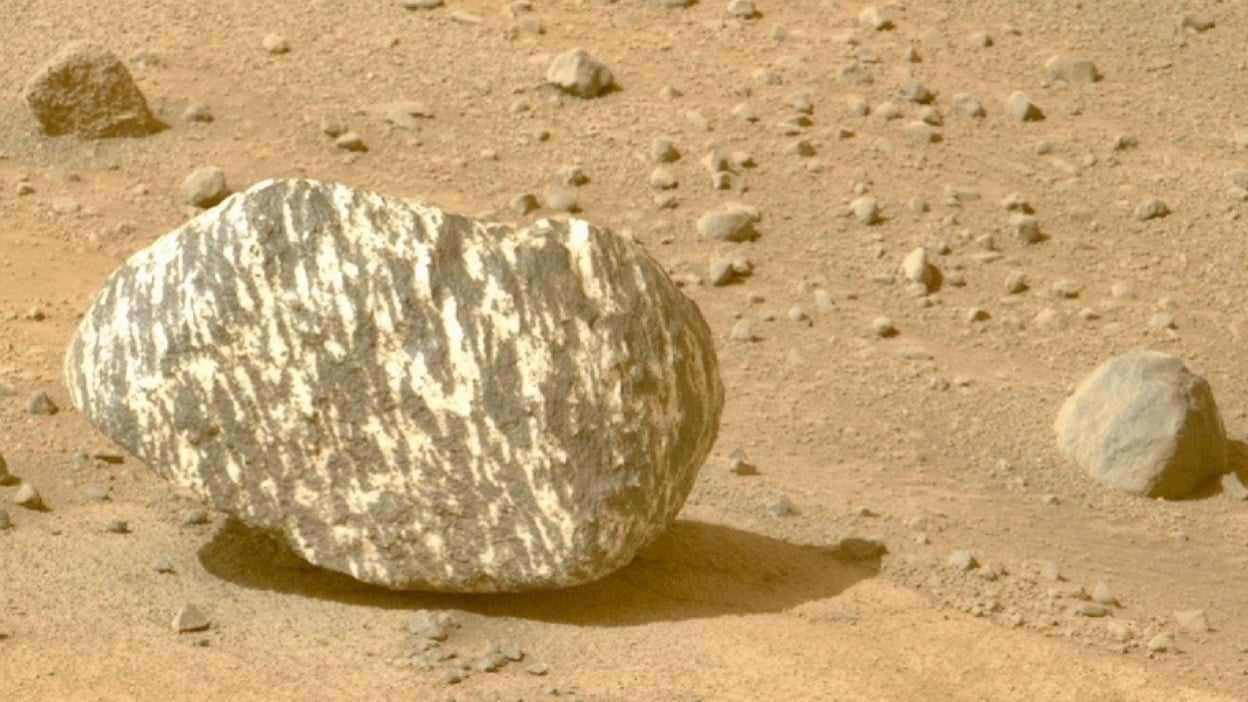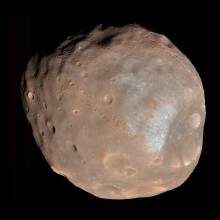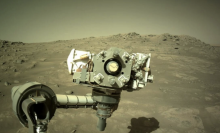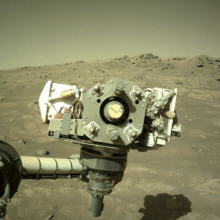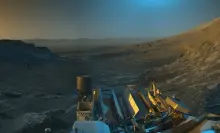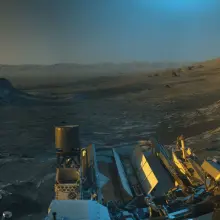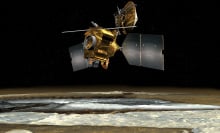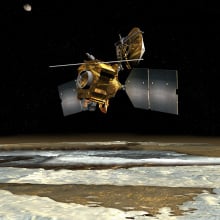On Mars, some 120 million miles away in space right now, anything that isn't another version of dusty red stands out like a sore thumb.
That's how the Perseverance rover, a lab on wheels about the size of a Mini Cooper, spotted an unusual rock with black and white zebra stripes two weeks ago. Scientists back on Earth named the oddball "Freya Castle" after a landmark in the United States' Grand Canyon.
Because it's a loose stone that is different from the bedrock underneath it, scientists suspect it rolled downhill at some point in the planet's history.
"This possibility has us excited," wrote Athanasios Klidaras, a Purdue University doctoral student, for NASA. "We hope that as we continue to drive uphill, Perseverance will encounter an outcrop of this new rock type so that more detailed measurements can be acquired."
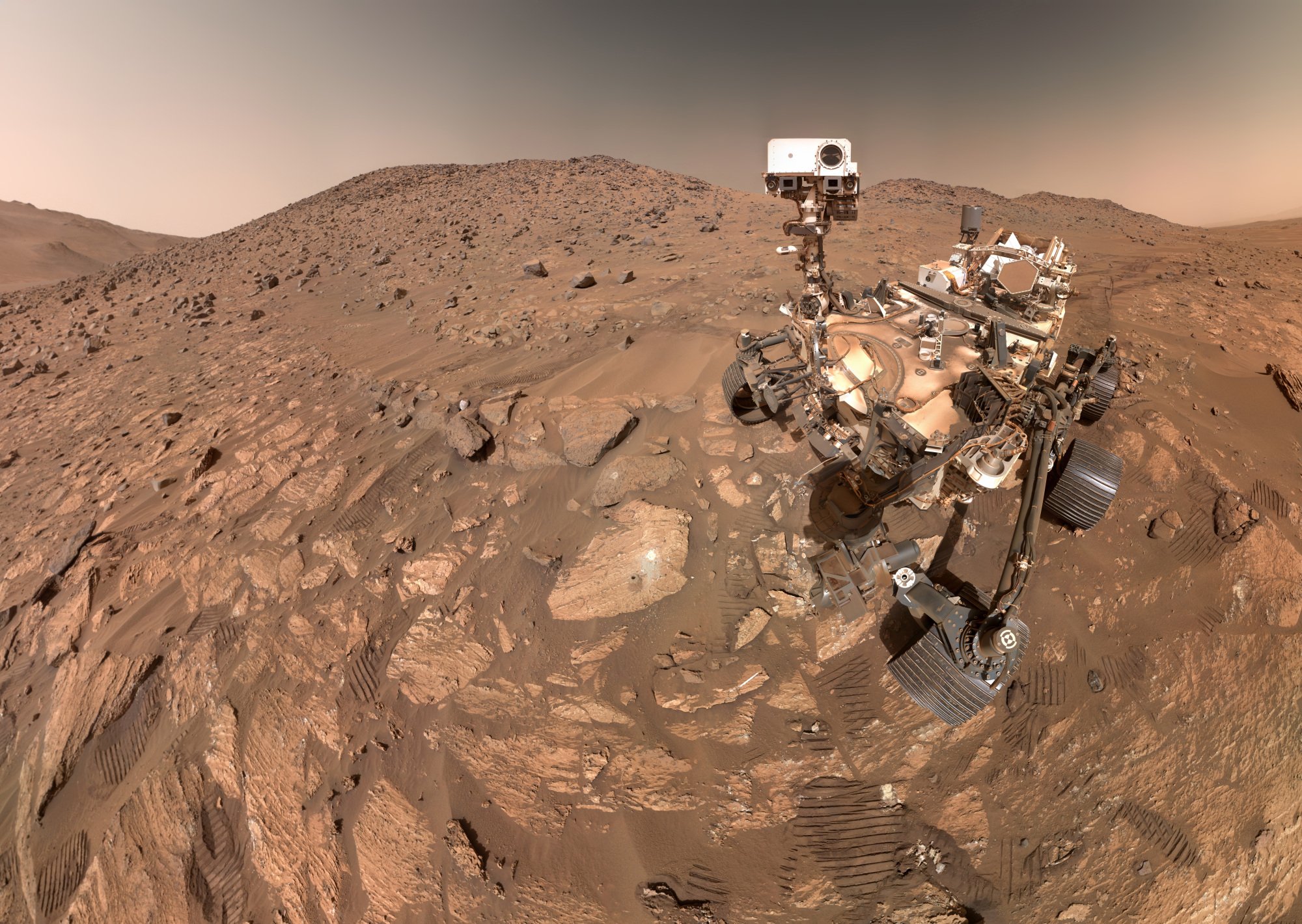
The latest finding follows the highly productive summer the rover and its twin Curiosity enjoyed, discovering several rocks that reveal Mars as having been a more geologically diverse planet than once thought. In a span of seven weeks, Perseverance and Curiosity found pure sulfur, a likely anorthosite boulder that could be a part of the planet's original crust, and a spotted rock with the most compelling signs of ancient Martian life yet, though a sample would need to be shipped back to Earth for confirmation.
For about a month, Perseverance has been crawling up the steep slopes of Jezero Crater, a site where scientists believe a river once emptied into a body of water. The rover is attempting to reach the crater's rim, which rises about 1,000 feet above the basin floor, on a quest to find a larger variety of rocks. The journey has been slow, but the rover is making better progress now that it has reached a flatter stretch of land.
After seeing the unusual Freya Castle from afar on Sept. 13, scientists took higher-resolution photos to get a better look before the rover drove away. The closeups show that the rock, about eight inches wide, has a rather unusual texture — different from anything seen on Mars before. Though the team doesn't know much about its chemical makeup yet, scientists believe its zebra stripes could be the result of igneous or metamorphic processes.
Igneous rocks form when magma from within the planet crystallizes and solidifies. Metamorphic rocks started out as something else but were significantly altered from their original state after exposure to high heat and pressure.
The stark linear pattern of light and dark minerals found makes Freya Castle unique, Katie Stack Morgan, deputy project scientist for the Perseverance's mission, told Mashable. A reasonable guess is that this rock is igneous and composed of feldspar, the lighter-colored minerals, and pyroxene or amphibole, the darker minerals.
"Since this block was sitting alone on the surface without any context, we don’t know where it came from or how it found its way into the crater," Stack Morgan wrote in an email. "Perseverance may find the source of a block like this during its upcoming crater rim exploration."
The reason scientists want the rover to explore the rim in the first place is for its potential to be littered with ancient Martian bedrock rubble. Jezero Crater formed when something substantial smacked into Mars billions of years ago. The impact could have churned up and tossed deep materials to the surface.
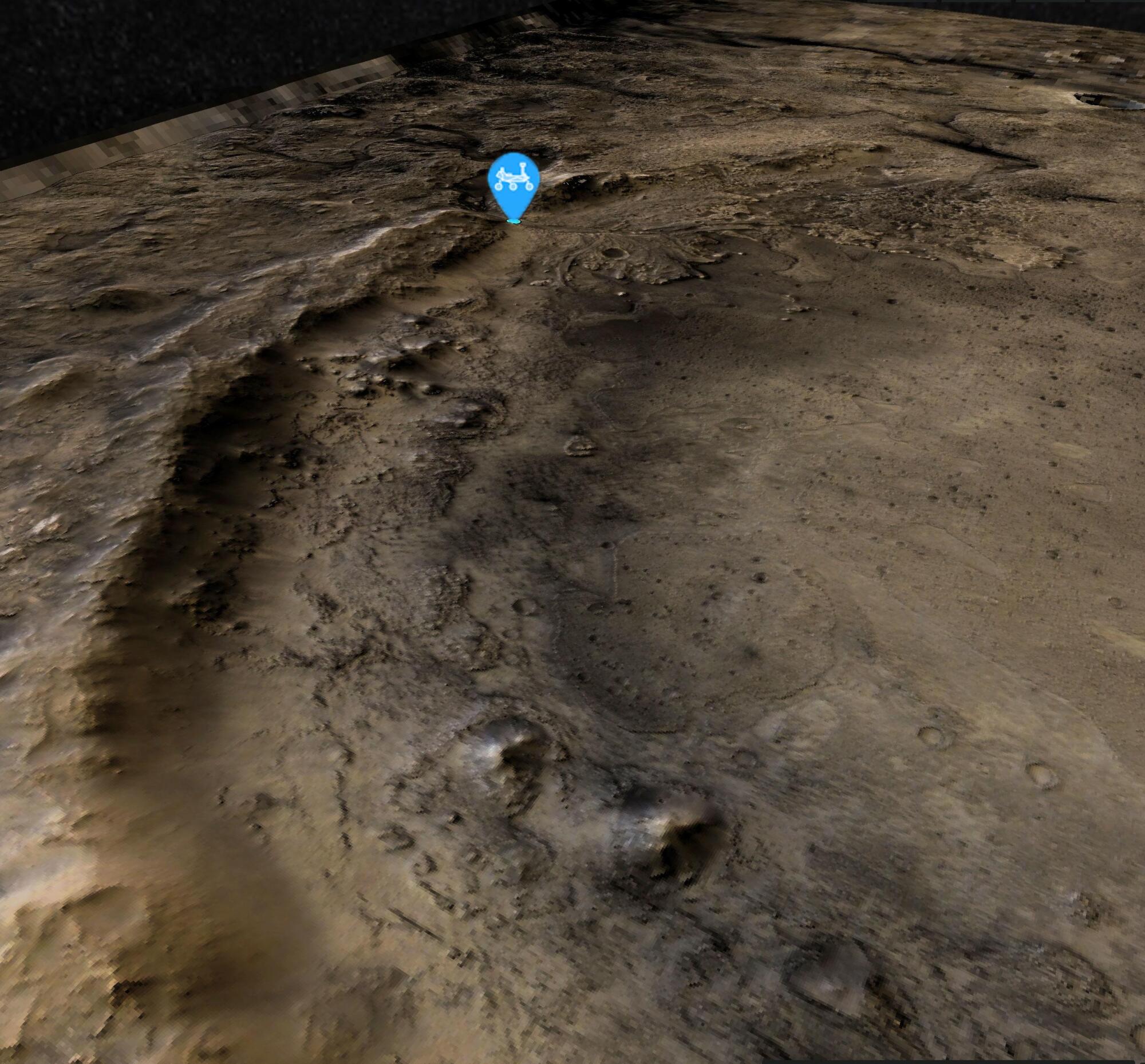
"Crater rims act as keepers of ancient Martian history, uplifting and exposing the stratigraphy of these impacted materials," NASA has previously explained. "Additionally, extreme heat from the impact can encourage the circulation of fluids through fractures similar to hydrothermal vents, which have implications for early habitability and may be preserved in the exposed rim bedrock."
The recent rock discoveries have only mounted pressure on NASA to solve the problems facing its proposed Mars Sample Return mission, an expensive and technologically complex plan to fly bits of rock, dust, and air collected by Perseverance back to Earth.
The mission has been in limbo since a review found it would cost upward of $11 billion and take nearly two decades to achieve. NASA has since engaged the greater aerospace industry for input on how to wrangle in spending and development. Seven companies have suggested a variety of ideas, which Mashable has reported, including repurposing Artemis moon landers and rethinking the last leg of the journey. NASA hasn't yet announced its path forward.
Topics NASA
